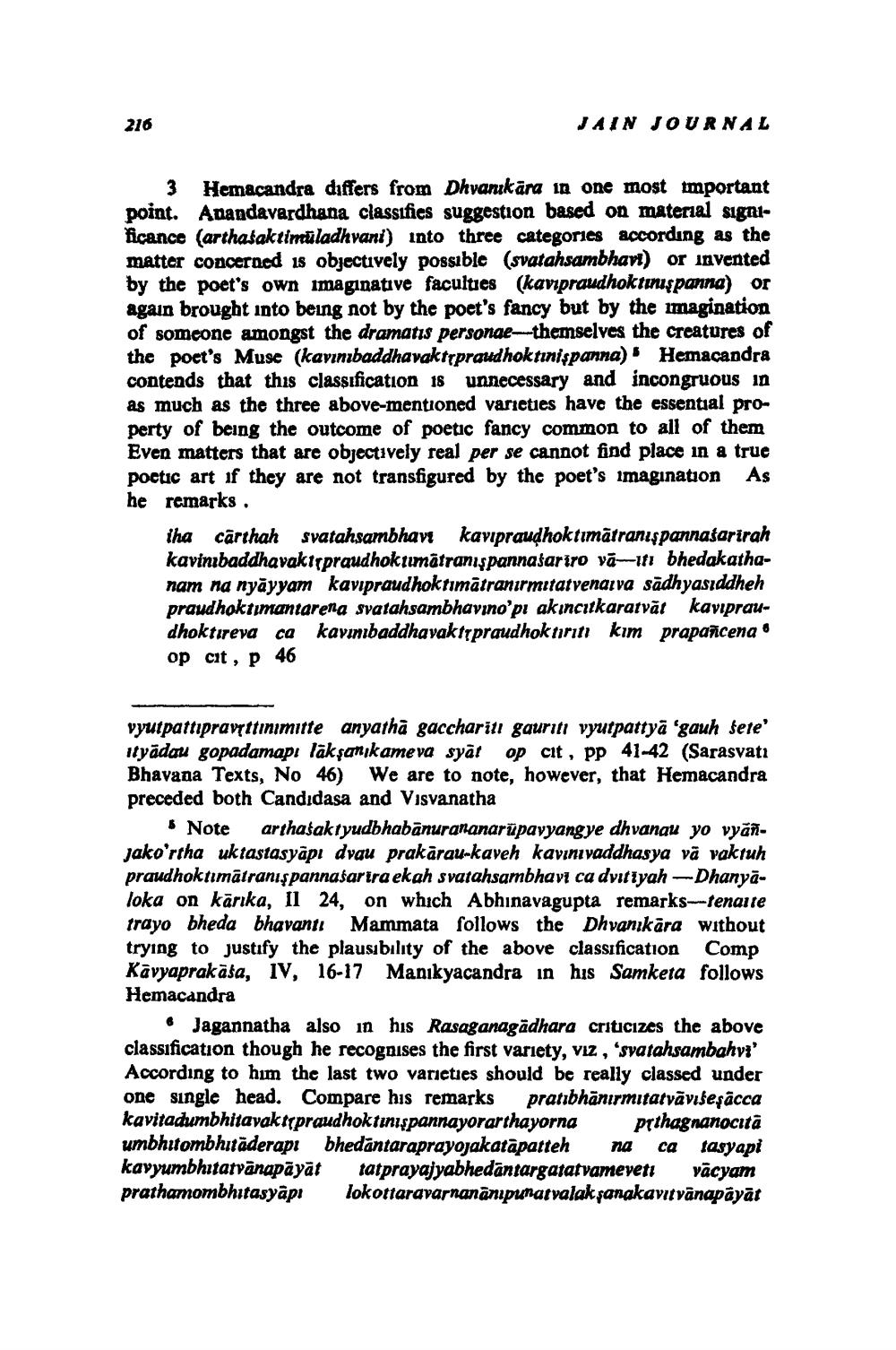________________
216
JAIN JOURNAL
3 Hemacandra differs from Dhvanikara in one most important point. Anandavardhana classifies suggestion based on material significance (arthasaktimuladhvani) into three categories according as the matter concerned is objectively possible (svatahsambhavt) or invented by the poet's own imaginative faculties (kavipraudhoktınışpanna) or again brought into being not by the poet's fancy but by the imagination of someone amongst the dramatis personae--themselves the creatures of the poet's Muse (kavinbaddhavakt,proudhoktinispanna) Hemacandra contends that this classification 18 unnecessary and incongruous in as much as the three above-mentioned varieties have the essential property of being the outcome of poetic fancy common to all of them Even matters that are objectively real per se cannot find place in a true poctic art if they are not transfigured by the poet's imagination As he remarks
iha carthah svatahsambhav kavipraudhoktimatranıspannasarirah kavinbaddhavaktspraudhoktımätranışpannasariro vā-ıfı bhedakathanam na nyāyyam kavipraudhoktımātranirmitatvenaiva sādhyasıddheh praudhoktımantarena svatahsambhavino'pi akıncıkaratvāt kavipraudhoktırevaca kavınıbaddhavaktspraudhok tırın kim prapancena op cit, p 46
vyutpattıpravyttinimitte anyatha gaccharili gauriti vyutpattya 'gauh sete' ityādau gopadamapı läkşanık ameva syāt op cit, pp 41-42 (Sarasvati Bhavana Texts, No 46) We are to note, however, that Hemacandra preceded both Candidasa and Visvanatha
Note arthataktyudbhabanurananarüpavyangye dhvanau yo vyanjako`rtha uktastasyāpı dvau prakārau-kaveh kavınıvaddhasya vā vakruh praudhoktımātranışpannasarira ekah svatahsambhavi ca dvitiyah-Dhanyaloka on karika, Il 24, on which Abhinavagupta remarks--tenaite trayo bheda bhavantı Mammata follows the Dhvankāra without trying to justify the plausibility of the above classification Comp Kavyaprakāša, IV, 16-17 Manikyacandra in his Samketa follows Hemacandra
Jagannatha also in his Rasaganagadhara criticizes the above classification though he recognises the first variety, Viz , 'svatahsambahvi' According to him the last two varieties should be really classed under one single head. Compare his remarks pranbhānirmitatvāviseşacca kavitadumbhitavaktypraudhoktınışpannayorarthayorna prthagnanocitā umbhutombhıtäderapi bhedantaraprayojakatāpatteh na ca tasyapi kavyumbhitarvänapāyāt tatprayajyabhedantargatatvameveti vācyam prathamombhitasyapı lokottaravarnananipmatvalak sanakavitvānapayāt




